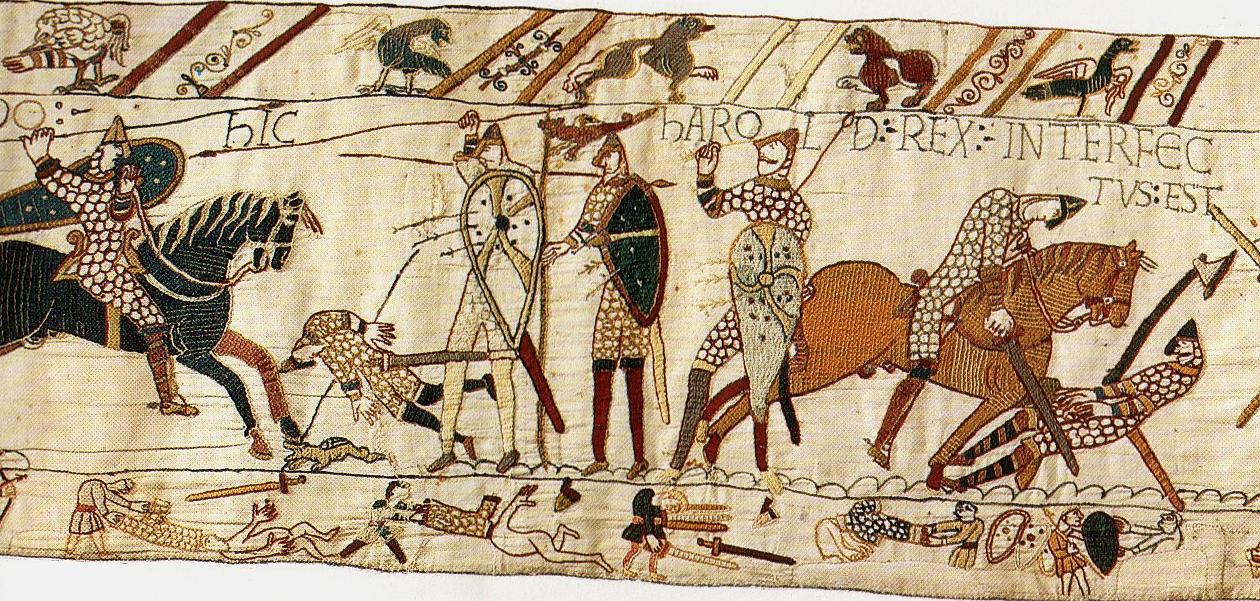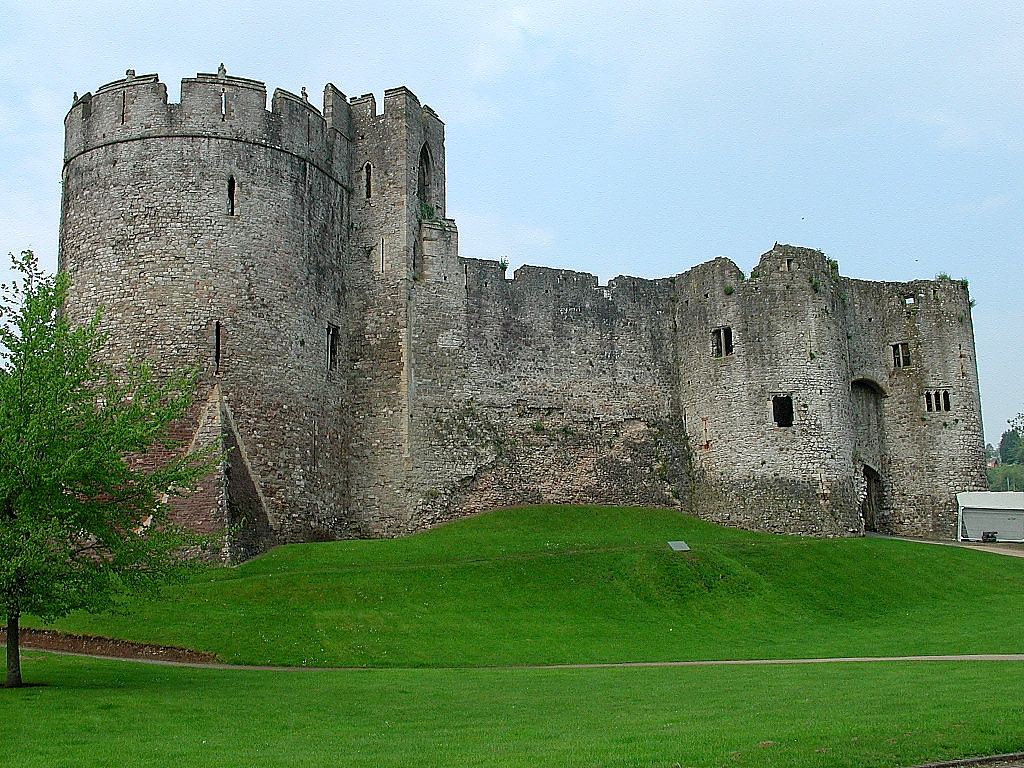Home | Main Menu | Castle Index | Historical Essays | Recommended Castles | What's New | Links
William Fitz Osbern
 |
A section of the Bayeux Tapestry detailing the Norman invasion of England.

Home | Main Menu | Castle Index | Historical Essays | Recommended Castles | What's New | Links
 |
A section of the Bayeux Tapestry detailing the Norman invasion of England.

lliam Fitz-Osbern's family had long served the Dukes of Normandy. He was steward to William the Conqueror, fought with the king at Hastings in 1066, and was rewarded with large estates in England shortly thereafter. The Welsh Marches, were one of many areas of concern to King William. Although Welsh kings had done homage to the Saxon kings of England, the country retained a stubborn sense of independence. This posed a serious threat to the Conqueror's plans, and he quickly took steps to secure the Marches as a buffer zone. The king realized castles of the simple motte and bailey type, common in England at the time, were insufficient for the task of subjugating the Welsh. Massive stone castles were needed as launching points for Norman military expeditions and as a refuge for the king's men. It was Fitz-Osbern the king called on to be his chief military strategist and castle builder.
King William gave Fitz-Osbern wide powers along the southernmost portions of the Welsh Marches. From here, Fitz-Osbern built a formidable force of fighting men, including close relatives and powerful magnets, with Hereford as his focal point. He established castles and garrisons at Monmouth, Clifford and Wigmore, but his greatest work was the magnificent castle at Chepstow, on the mouth of the river Wye. Chepstow became a springboard for westward Norman expeditions and the focal point of Norman settlement in Wales. Construction of Chepstow's "Great Hall," was begun by Fitz-Osbern in 1067 and still stands today, the oldest surviving stone castle of its type in Britain. Fitz-Osbern died in February 1071 at the Battle of Cassel in his native Normandy, but in that short interval between the conquest and his death, he introduced major changes in England. His initiative was the key to early Norman settlement.
Below: Chepstow Castle in southeast Wales
 |

Home | Main Menu | Castle Index | Historical Essays | Recommended Castles | What's New | Links
Copyright © 2009 by Jeffrey L. Thomas